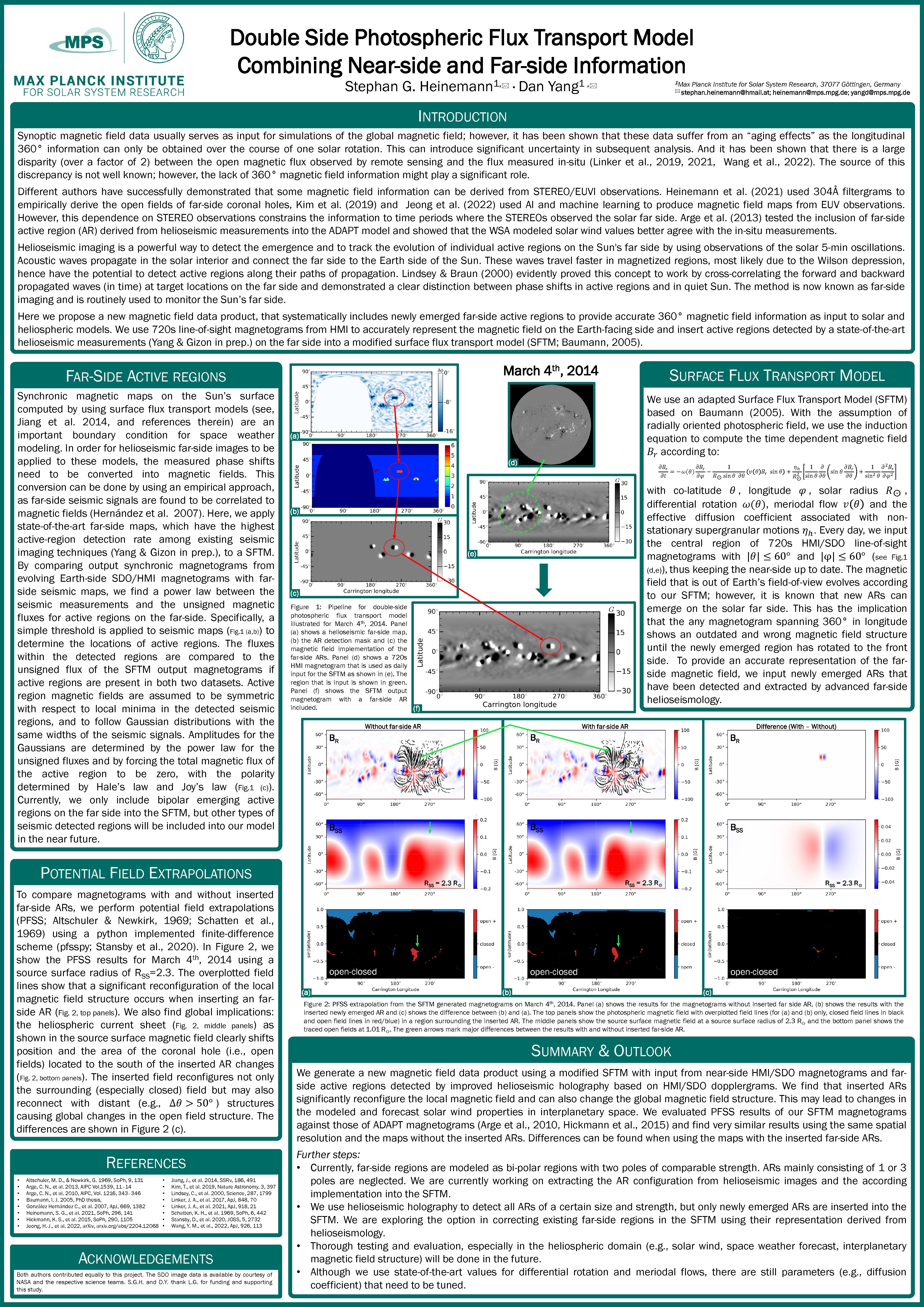Authors: Heinemann S.G (Max Planck Institute for Solar System Research, 37077 Göttingen, Germany), Yang, D. (Max Planck Institute for Solar System Research, 37077 Göttingen, Germany)
Synoptic magnetic field data usually serves as input for simulations of the global magnetic field; however, it has been shown that these data suffer from an “aging effects” as the longitudinal 360° information can only be obtained over the course of one solar rotation. This can introduce significant uncertainty in subsequent analysis. Here we propose a new approach in tackling this problem in form of a photospheric flux transport model that incorporates front-side information obtained by HMI/SDO and state of the art far-side helioseismology. We use 720s line-of-sight magnetograms from HMI to accurately represent the magnetic field on Earth facing side and insert active regions detected by Yang et al. (2022, in prep) on the far-side into a surface flux transport model. The model produces synoptic magnetic charts that more accurately represent the state of the sun at a given time, which includes active regions that emerge out of the traditional Earth’s field of view. This advanced data product will improve global solar and heliospheric modeling by avoiding the caveats that come from just one point of view.


